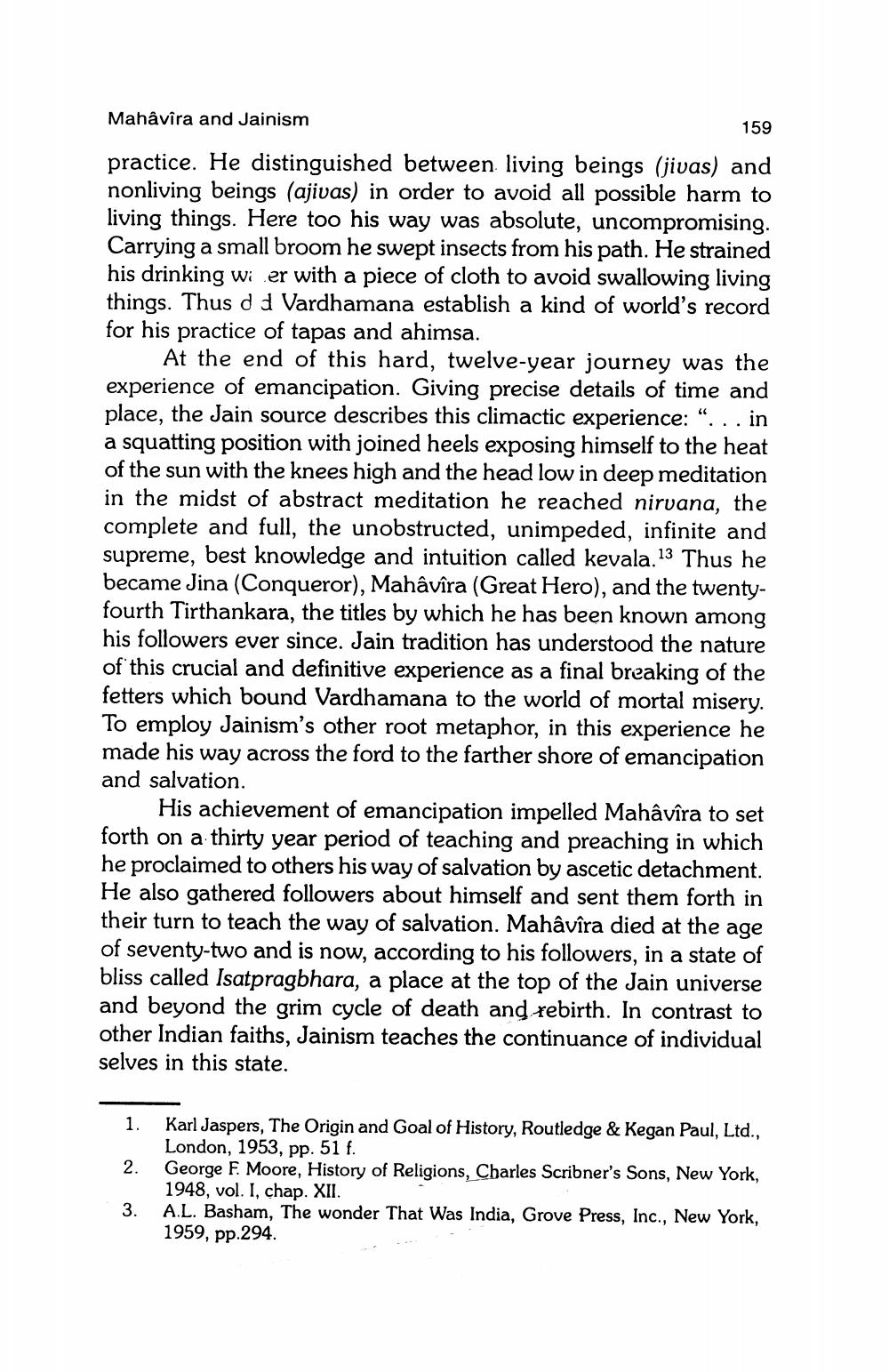________________
Mahavira and Jainism
159 practice. He distinguished between living beings (jivas) and nonliving beings (ajivas) in order to avoid all possible harm to living things. Here too his way was absolute, uncompromising. Carrying a small broom he swept insects from his path. He strained his drinking wi er with a piece of cloth to avoid swallowing living things. Thus d d Vardhamana establish a kind of world's record for his practice of tapas and ahimsa.
At the end of this hard, twelve-year journey was the experience of emancipation. Giving precise details of time and place, the Jain source describes this climactic experience: "... in a squatting position with joined heels exposing himself to the heat of the sun with the knees high and the head low in deep meditation in the midst of abstract meditation he reached nirvana, the complete and full, the unobstructed, unimpeded, infinite and supreme, best knowledge and intuition called kevala. 13 Thus he became Jina (Conqueror), Mahâvîra (Great Hero), and the twentyfourth Tirthankara, the titles by which he has been known among his followers ever since. Jain tradition has understood the nature of this crucial and definitive experience as a final breaking of the fetters which bound Vardhamana to the world of mortal misery. To employ Jainism's other root metaphor, in this experience he made his way across the ford to the farther shore of emancipation and salvation.
His achievement of emancipation impelled Mahâvîra to set forth on a thirty year period of teaching and preaching in which he proclaimed to others his way of salvation by ascetic detachment. He also gathered followers about himself and sent them forth in their turn to teach the way of salvation. Mahâvîra died at the age of seventy-two and is now, according to his followers, in a state of bliss called Isatpragbhara, a place at the top of the Jain universe and beyond the grim cycle of death and rebirth. In contrast to other Indian faiths, Jainism teaches the continuance of individual selves in this state.
1. Karl Jaspers, The Origin and Goal of History, Routledge & Kegan Paul, Ltd.,
London, 1953, pp. 51 f. 2. George F. Moore, History of Religions, Charles Scribner's Sons, New York,
1948, vol. I, chap. XII. A.L. Basham, The wonder That Was India, Grove Press, Inc., New York, 1959, pp.294.




